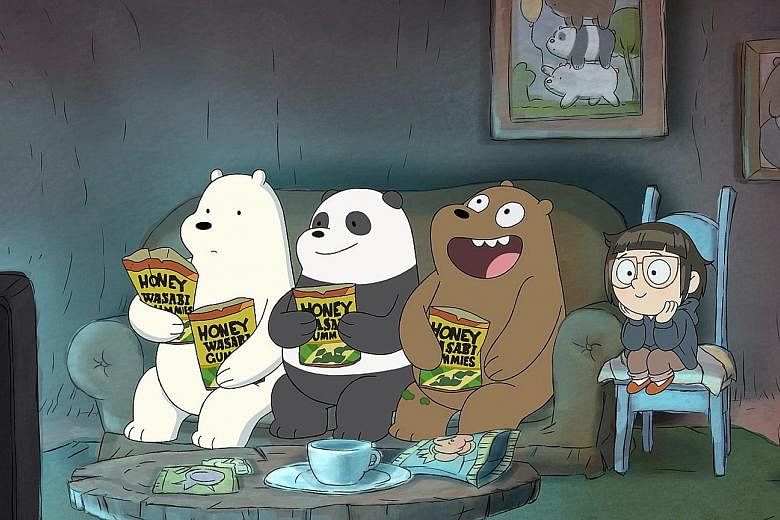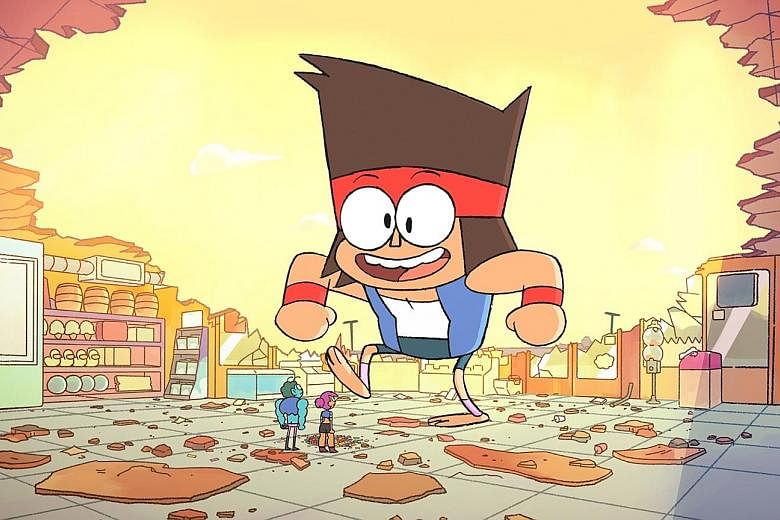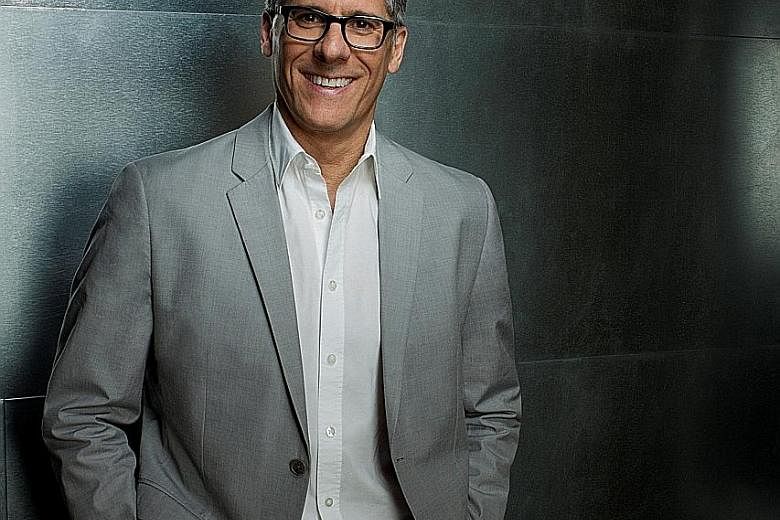At the Cartoon Network offices just outside Los Angeles, there are cubicles crammed with toys, games on every corner and an elaborate cereal bar straight out of Charlie And The Chocolate Factory.
But there is serious business at this playground, where grown-ups create shows such as The Powerpuff Girls (1998 to now), Adventure Time (2010 to now) and Teen Titans Go! (2013 to now).
And as the network celebrates its 25th anniversary this month, it finds itself in increasingly challenging terrain: competition from other digital media has pushed conventional or "linear" television ratings into free fall in the United States, with viewing numbers for some of the biggest children's channels, such as Disney and Nickelodeon, in steady decline.
But chief content officer Rob Sorcher says the home of Johnny Bravo (1995 to 2004) and Dexter's Laboratory (1996 to 1999) has managed to reinvent itself - pivoting to multi-platform, on-demand distribution by developing apps, video games and other new ways of reaching its audience.
In a one-on-one chat with The Straits Times last month, the 55-year-old says it realised its young viewers were "engaging with the Internet and looking to find content in shorter form, or expecting content to be where they are".
"So we have moved with that in many ways, which might include gaming, short-form (content) or TV series. We've made major changes to shift from thinking of ourselves as a TV-consumption company to a total-consumption company and creating content with that in mind."
Thus the network has developed dozens of apps for its existing series, including Mighty Magiswords (2015 to now), the story of two clumsy warriors-for-hire, the app for which lets viewers collect Magiswords and meet characters while watching the show.
And OK K.O.! Let's Be Heroes, a superhero comedy launched in the US recently and to debut in Singapore next year, was developed in tandem with its accompanying video game.
This approach has spawned flourishing digital ecosystems around titles that also spill over into fan groups online, Sorcher says.
"And it is those fan communities that are the ones marketing those shows and we see the results of this right away. If we were just restricted to a single silo, that can't happen."
The Cartoon Network's young creatives, many of whom are hired fresh out of top art schools such as the California Institute of the Arts, do not need much prodding to develop these alternative channels either.
"This new generation of creators coming up are gamers as much as they are cartoon lovers. They are very comfortable working in many media, and also expect their world will be everywhere."
He believes this new strategy is working. "Traditional TV-viewing across the board, both for kids and adults, is under pressure at the moment. But our shift to a total consumption model has definitely protected and prepared us.
"And we shifted our mindset of what success is, so we're not as focused on (linear TV ratings)," he says, noting that Cartoon Network has done well in the video-on-demand (VOD) sphere, its VOD app even winning an Interactive Emmy for User Experience and Visual Design last year.
The channel also has its finger in the wind when it comes to another industry-wide shift: the growing scrutiny of ethnic and gender diversity in content.
It has been more of a hot-button issue for live-action entertainment - where furores now periodically erupt over accusations of female or minority under-representation - but Sorcher says at the Cartoon Network, "we think about it every day and we take it on as an important mandate - and it's a filter that's applied in many ways" (see other story).
"Historically, we were seen more as a boy-leaning network and girls grew out of animation sooner - they graduated to live action, to scenarios where there were social situations, like with a lot of those Disney sitcoms."
But the demographics of its audience have broadened considerably in recent years.
"If you look at Steven Universe, it features a lot of female protagonists and it is led by a woman, (creator Rebecca Sugar), which has an influence on the overall tone."
The show, which started in 2013 and is about three magical humanoid aliens, appeals to girls and some fans stay with it even when they go to university, he says. "Adventure Time was similar too. We have a greater diversity of people, and at a broader age range, staying with those shows," he says, although the network's demographic "sweet spot" remains the six-to 14-year-olds.
"So there is something bigger going on and we let that happen, then the Internet made things happen on the side that became (online) fandom. Now, we say, 'You know what - we're going to embrace that. That's our fan base and they're helping us.'
"And we are, in fact, developing some properties we know in advance will have that and we're making those differently."
Still, the success of all these new endeavours goes back to basics: how good the cartoons themselves are.
"If you haven't done the work on the characters and the story, and if you haven't done something people love and don't have an auteur or point of view inside of that, then you've got nothing," Sorcher says.
"We know how to do every bell and whistle, but it doesn't matter how fancy or how well-constructed it is. In the end, it's still entertainment that has an emotional component. That's the thing we're trying to preserve in the midst of it all.
"We can only be true to ourselves and stick to what we're good at: finding talent and creating animation."
A bonus, he adds, is that animation seems to travel rather well.
"It just happens to translate really well all over the world - more than with, say, our competitors who have a lot of live action, which is just a harder thing (to market) in a lot of regions. So it's an inherent advantage to having characters that go very easily all over the world."



